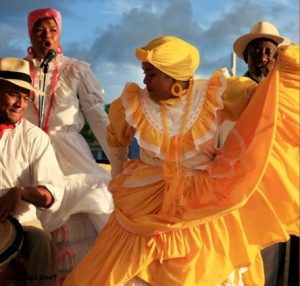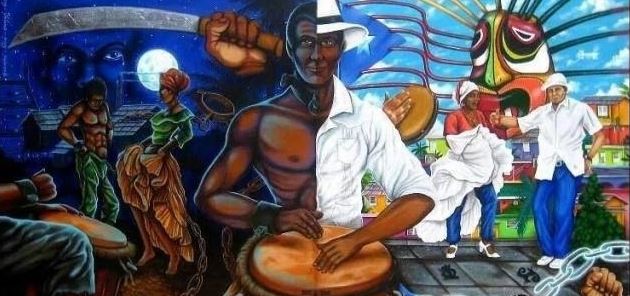This post is also available in:
 Español
Español
Unlike the Plena, there are several styles of Bomba. In this blog, I will only explain WHY we have several types of this genre.
I will leave the explanation of WHAT are those types of Bomba rhythms for the next blog. There’s a hint of them in the video at the end.
Differences Between Bomba and Plena
In Part 2 of this series, I mentioned two of the three differences between Bomba and Plena.
The first is that Bomba is used mostly for dancing and not for protests or serve as an audio newspaper.
The second is that there are several types of Bomba, where there’s only one type of Plena.
The third difference is that we can’t identify the exact place (nor timeframe) when Bomba started. Perhaps this may be because of its older background. For Plena we know the exact year, city, and neighborhood where it began.
Locations Where Bomba Developed
Since the rhythm of Bomba was the product of the slaves in the sugar plantations, it developed in 6 main areas: Mayagüez, Ponce, Guayama, Cataño, Santurce, and Loiza.

Some theories state that it began in Mayagüez, while others place it in Santurce or Loiza. The people from Loiza claim that the type played there is the most “original”, meaning that it is the closest to the first one developed by the African slaves in Puerto Rico. I don’t believe that claim can be confirmed.
As in any oppressive situation, the sugar cane plantation owners wanted to keep their slaves under control. To avoid any threats of escapes or rebellious uprising, they developed a scheme of mixing slaves that came from different parts of Africa. Since they knew that the different regions of Africa spoke different languages or dialects, mixing them would make it more difficult for the slaves to communicate, and therefore, to plan escapes or rebellions.
Not being able to fully communicate, the slaves resorted to music. And as you might have guessed, this gave way to the birth of Bomba.
But that’s not the whole story!
Another part of the plantation owners’ scheme to keep their slaves under control, was to ship groups of them around the island. They would move them from one plantation to another.
Doing this would continue to mix the slaves languages, and therefore, make it harder to communicate amongst themselves. This also placed them in unfamiliar locations, making it even harder to plan any escapes.
As slaves were moved around the island, they took with them the Bomba rhythm they had developed. However, each region soon began to create mutations of the rhythm. Eventually these became different types of rhythms, which can normally be attributed to a particular region.
I will get into that in my next blog in this series, in which I will cover the Types of Bomba rhythms in detail, with the help of a friend.


[…] Most of the types of Bomba you can assign to a particular location or region where they came from. The reason is because of the movement of slaves we discussed in Part 3. […]